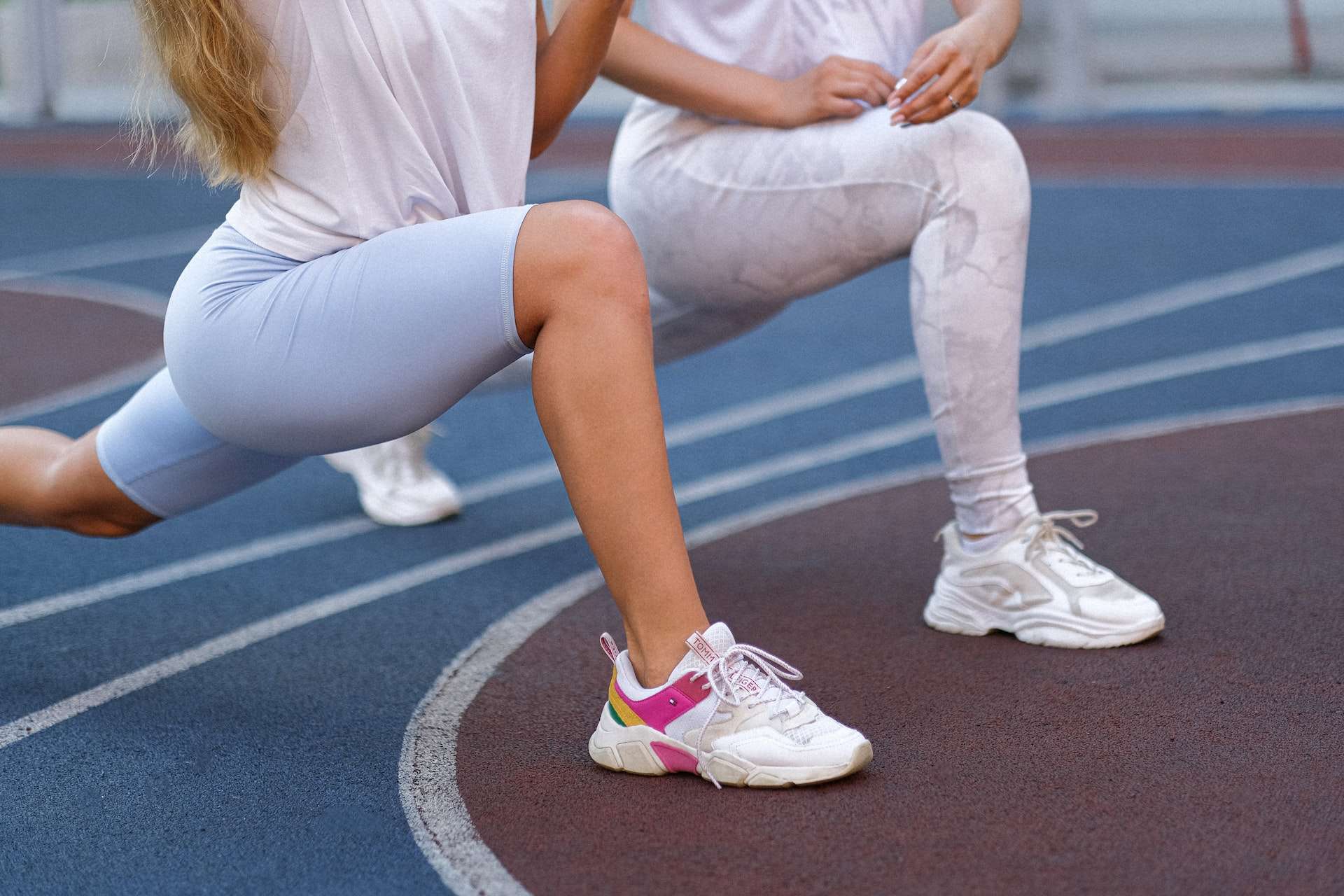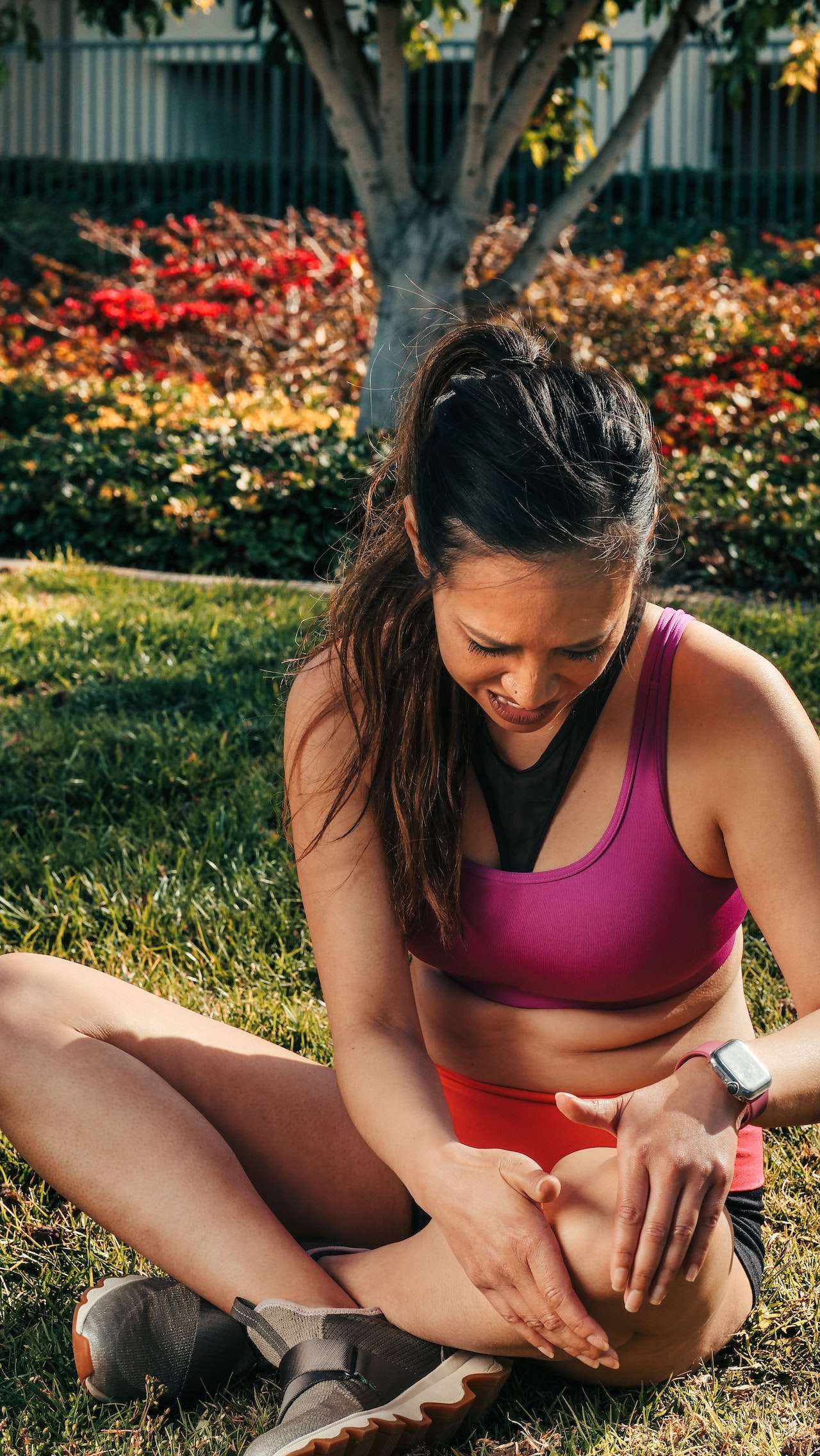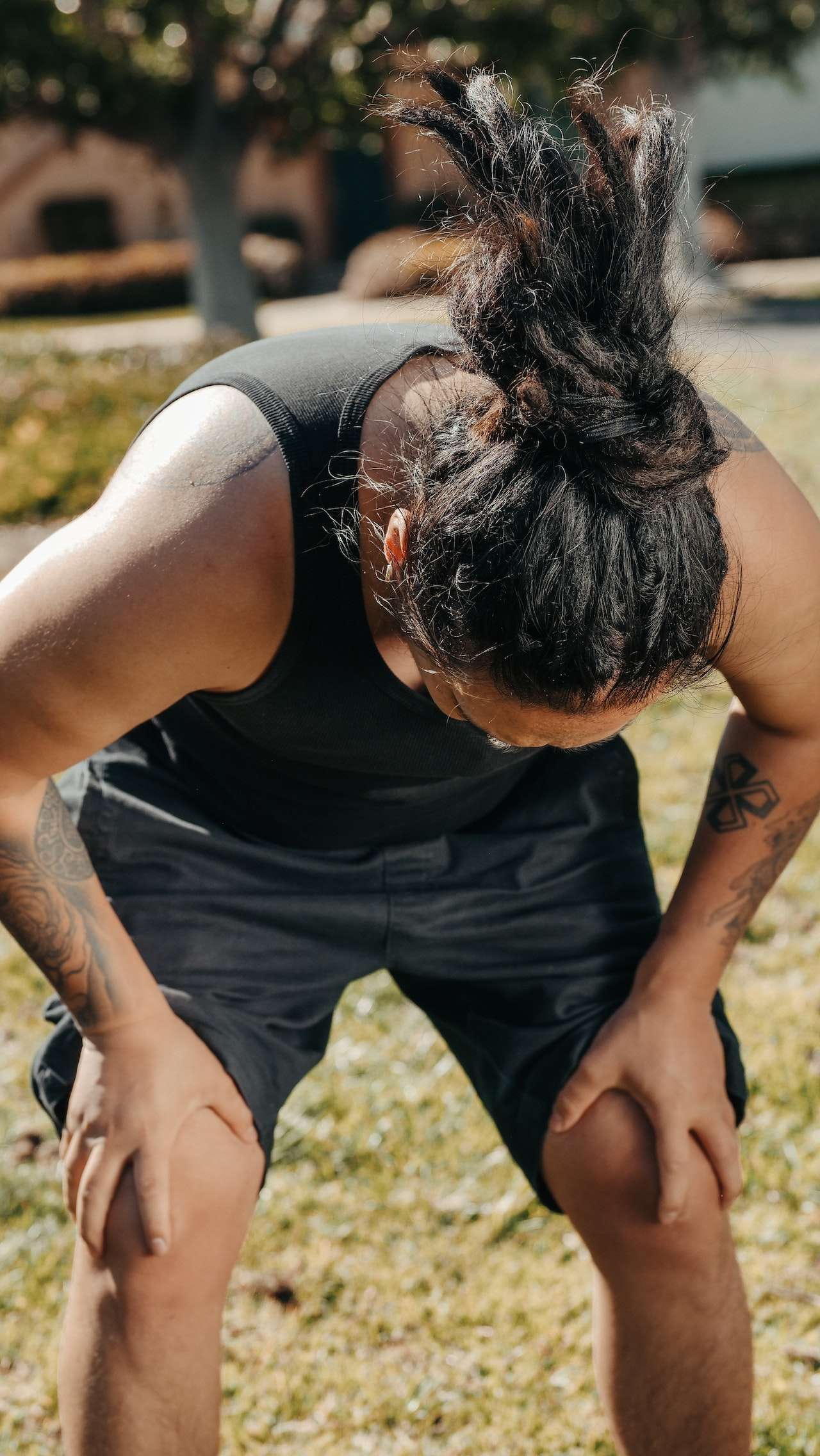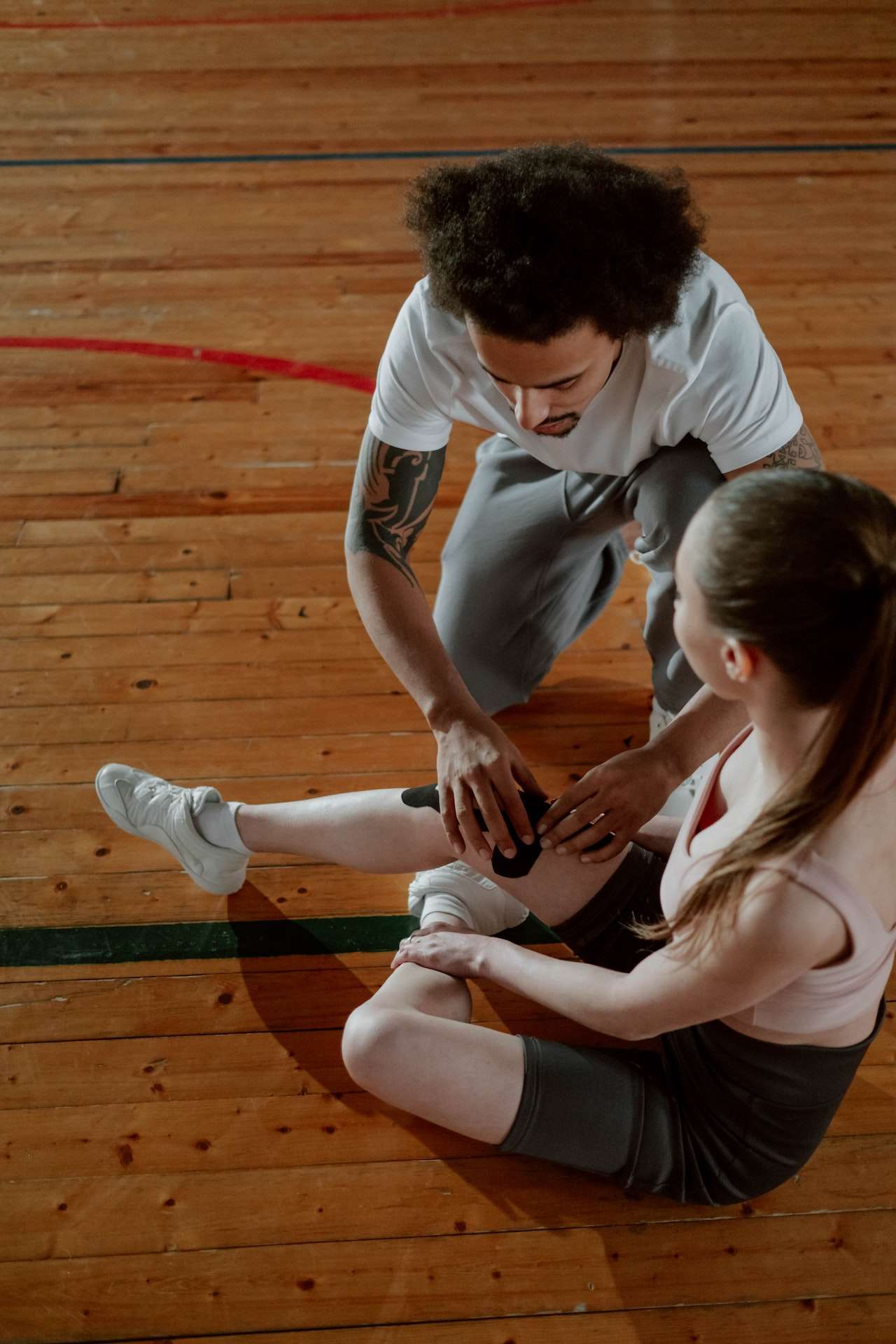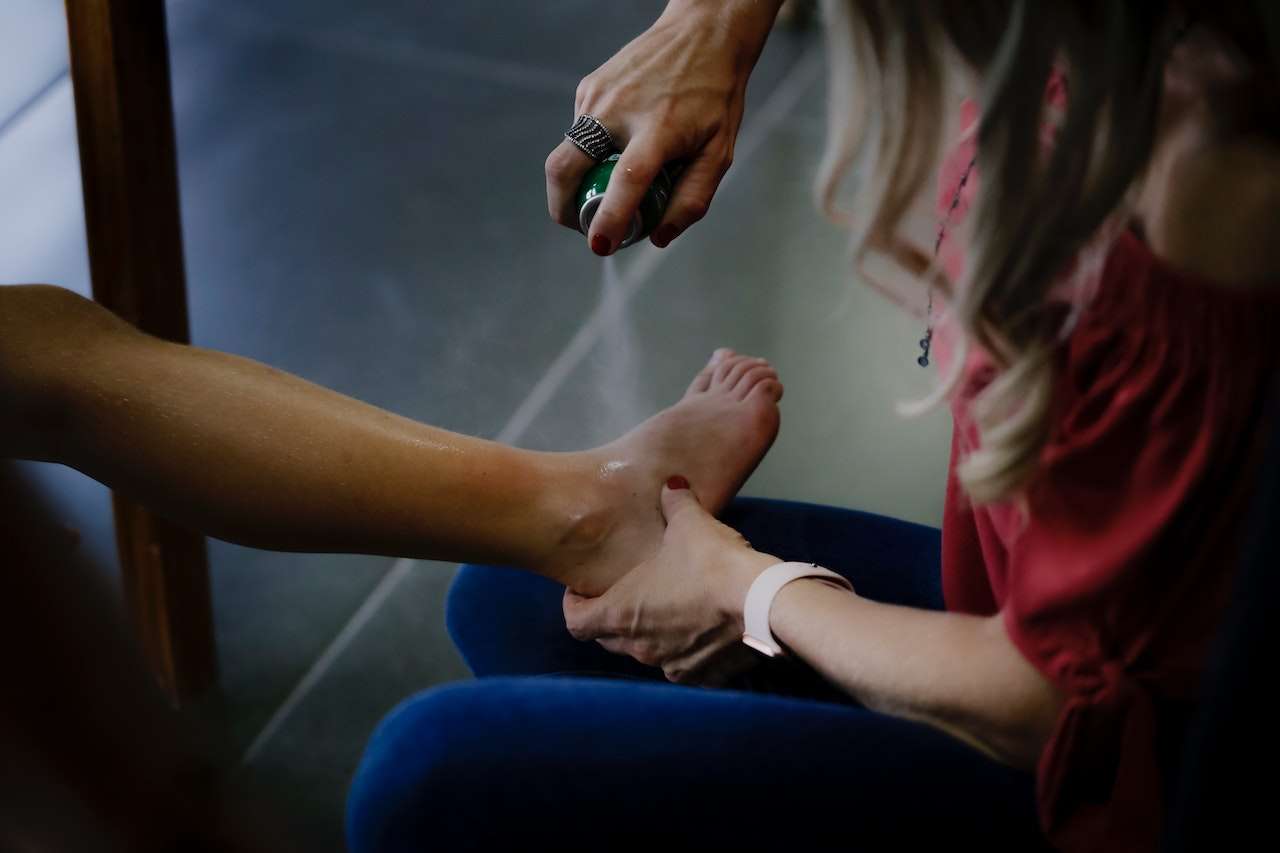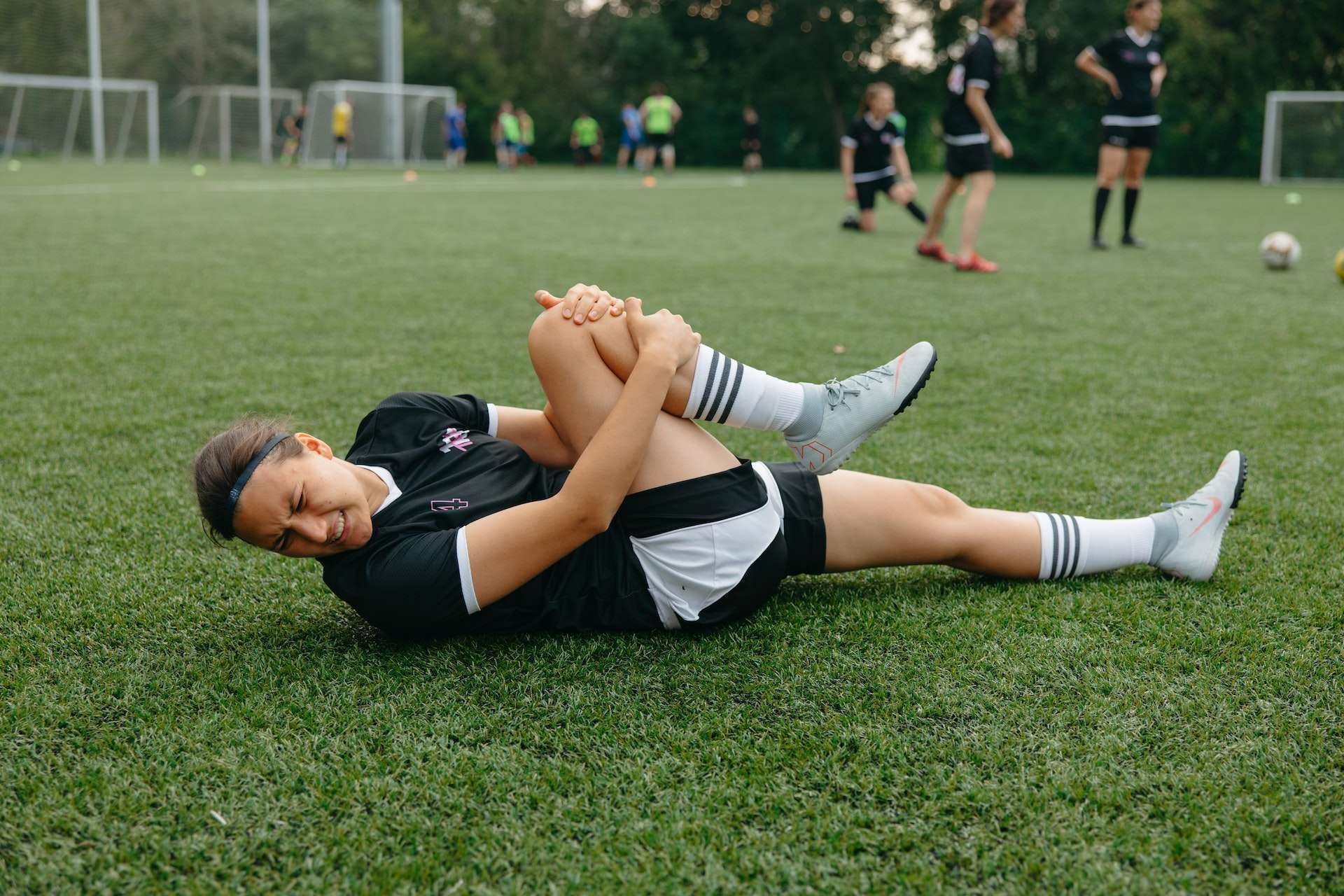|
Are you an avid runner who has recently been experiencing knee pain? You’re not alone. Many runners of all levels suffer from knee pain due to the repetitive nature of running. But how long does it typically take to recover from this common injury? This article will provide insight into the recovery time associated with knee pain caused by running and a few tips on speeding up the healing process. As a runner, you know that aches and pains are part of the sport. However, when that pain becomes more persistent or severe, it’s essential to prevent further damage and get back on the road or trail as soon as possible. The good news is that most runners can recover from knee pain caused by running relatively quickly with proper treatment and care. Recovering from an injury can feel like an uphill battle, but you can conquer the challenge with patience and dedication! In this article, we’ll explore how long it usually takes runners to fully recover from knee pain caused by running and share some helpful tips for speeding up the healing process. So read on if you’re ready to master your recovery!
Table of Contents
show
Factors That Affect Recovery TimeThe answer to this question is more complex regarding recovering from knee pain caused by running. Everyone is different, and the amount of time needed for recovery can vary greatly depending on various factors. Pain in the knees when running can range from mild discomfort to severe aches that make it hard to walk or even stand. The location of the pain – medial pain in the knee, extreme knee pain, back knee pain, below knee pain, or even running down your leg – will also affect your recovery time.
Exaggerating slightly, if you were to go for a run and experience intense pain in your knees afterward, you might find yourself crippled for days. Walking would be difficult and uncomfortable, and any movement would cause extreme agony. On the other hand, if you have minor twinges or dull aches when running, you can return to your routine quickly without too much trouble. In either case, seeking medical advice is always recommended because what may seem like normal soreness could be a serious injury or medical condition. It’s important to remember that everyone’s body responds differently, and there is no single ‘right’ answer as far as how long it takes to recover from knee pain caused by running. But with proper treatment and rest, anyone affected by this issue should be able to get back on their feet soon enough! Common Causes Of Knee Pain In RunnersKnee pain can be a real nuisance for runners, and it’s essential to understand the common causes of knee pain in runners. While there are many reasons why your knee may hurt after running, some of the most common include pain in the knee running down the shin, pain in the knee after running, no swelling, pain in the knee after running a few miles, and pain in the knee when running and walking. In addition to these conditions, what does it mean when your knees hurt when you run? This could indicate something called ‘runner’s knee,’ an umbrella term for several types of damage to the knee, such as patellofemoral syndrome and iliotibial band syndrome. Other conditions that tend to affect runners include why behind my knee hurts after running, pain in the knee cap running, pain from running causes, and sore knee from running on concrete. Pain in any of these areas could indicate muscle imbalance or weakness, poor form or technique during exercise, overtraining or overuse injuries due to short rest days between runs, or not following an appropriate mileage progression for their fitness level. It is essential to address these underlying issues as soon as possible by obtaining an accurate diagnosis from a medical professional. The next step is understanding how to diagnose the source of your knee pain so that you can begin a targeted course of treatment. How To Diagnose The Source Of Knee PainHave you ever felt pain in your knee while running? It can be frustrating and disheartening, especially when you don’t know the cause of the pain. Diagnosing the source of knee pain during running is essential, as it could indicate a more serious issue. One of the most common causes of knee pain in runners is overuse or an imbalance in muscles. This can lead to injury, including tendonitis and bursitis. Other causes include stress fractures, the runner’s knee, patellofemoral syndrome, and IT band syndrome.
If you experience any of these symptoms—such as swelling, redness, or sharp pains—it is recommended that you see a doctor for further diagnosis. When diagnosing the source of your knee pain, it is essential to remember that not all forms of running will cause the same type of pain or injury. For instance, if you are experiencing pain in your inner knee when running long distances, this could be due to incorrect form or weak hip muscles. Similarly, if you’re feeling pain in the back of your knee after running downhills, this may indicate an imbalance between the quadriceps and hamstrings. TIP: Pay attention to what type of activity triggers your knee pain and how long it takes for the discomfort to dissipate afterward. This will help you determine which type of treatment is best suited for your individual needs. Importance Of Rest And Ice In RecoveryAfter a hard run, when you’re dealing with knee pain, it’s essential to rest and apply ice as soon as possible. This is the best way to reduce inflammation in your knee and help relieve discomfort. If you don’t take the necessary steps to care for your knee after running, it could lead to more severe issues like the runner’s knee or IT band syndrome. Resting and applying ice can be an effective treatment for pain in the knee caused by running. Ice can help numb the area and reduce swelling after workouts that cause pain in the knee when running, such as hill sprints or intense interval training sessions. You may also find relief from pain in the knee after running by taking an anti-inflammatory medication, such as ibuprofen or naproxen sodium. It also helps to avoid activities that strain your knees until the pain subsides. Taking these measures can significantly reduce your recovery time if you experience pain in the side of your knee from running or inner knee pain when running due to overuse injuries caused by workouts like squats or lunges. Even if you don’t have any specific symptoms of a runner’s knee, such as a clicking sensation or grinding feeling in your joint, it’s essential to take some time off and let your body heal before resuming high-impact exercises that might cause further damage. By taking precautions now, you’ll be able to prevent more severe issues and get back into action sooner without worrying about how long it will take for your knee pain from running exercises or working out to subside. Taking this extra step can help you stay injury-free and continue enjoying your favorite activities without any long-term consequences – so don’t hesitate! With proper rest and ice therapy, you can start feeling better soon and move on to physical therapy and strengthening exercises confidently. Physical Therapy And Strengthening ExercisesAfter all, rest, and ice can do wonders for reducing inflammation and easing discomfort. However, more than these methods are needed to address the underlying issue. Physical therapy and strengthening exercises are essential to long-term recovery from knee pain in runners. Pain in the knee is a surprisingly common problem for those who run regularly and can range from mild discomfort to chronic issues such as a runner’s knee or patellar tendonitis. Pain in the knee joint after running, pain on the inside of the knee from running, pain in the medial knee when running downhill, pain in the inner knee while running uphill. Pain in the knee joint while running, or even just regular aches and pains can all be addressed with physical therapy and strength training.
By targeting muscle imbalances that lead to overuse injuries, physical therapists can help runners strengthen weak muscles around the joint while encouraging them to focus on proper form during their runs. Research shows that participation in physical therapy is associated with improved outcomes for runners dealing with acute or chronic knee pain. As part of an overall treatment plan – which should include rest and possibly anti-inflammatory medications – physical therapists can help patients get back on their feet faster than if they were relying exclusively on home remedies. With proper guidance from a trained professional, people suffering from pain in the knee caused by running can take steps towards a full recovery beyond simply managing symptoms. Non-Surgical Treatments For Knee PainDealing with knee pain from running can be a daunting task. As a runner, you’re eager to get back out there and complete your next race, but the throbbing in your knee prevents you from doing so. Fortunately, several non-surgical treatments can help you manage the pain and get back on track. Imagining yourself running again without pain may seem like a far-off dream, but with these three steps, you can achieve it: rest, physical therapy, and strengthening exercises. Resting is essential to allow your body to heal itself and reduce inflammation. Physical therapy helps stretch your muscles and joints to stay flexible and mobile while easing discomfort. Finally, strengthening exercises designed for runners will help strengthen your muscles to absorb impact better while running or jumping. These treatments have been proven to bring relief from everyday causes of knee pain, including pain in the knee when running but not walking; pain in the knee during running; pain in the back of the knee running down the calf; sharp pain in the knee when running downhill; pain in front of the knee from running; does knee pain from running go away; pain in knee goes away with running; pain in hip and knee from running; knee pain from running hills; and pain in knee on impact running. With consistent treatment over time, you’ll be able to compete at the same level as before without fear of further injury or discomfort. While non-surgical treatments are effective for most cases of a runner’s knee, some severe cases require surgical intervention instead. Surgical Intervention For Severe CasesMany runners will experience knee pain during or after running; however, it is not always necessary to resort to surgical intervention for severe cases. Some may fear that surgery is the only option for relieving the pain in their knee from running, but several non-surgical treatments are available. From physical therapy and injections to braces and orthotics, these treatments can help you manage the pain in your knee from running without having to go under the knife. If you suffer from pain in your knee when you run, chances are good that you won’t need surgery at all.
Depending on the severity of your pain in the lower knee from running, soreness behind the knee from running injury, or pain in the left or right knee from running, a combination of rest and low-impact exercise might alleviate any discomfort. In addition, medications such as ibuprofen can also be taken to reduce swelling associated with your symptoms. Orthotics can also reduce stress on your knees and inflammation if you are experiencing pain near your knee from running. By exploring different treatment options before surgery, runners can ensure they take the best action for their needs. With proper care and treatment tailored specifically for each person’s unique situation, they can get back out on the track sooner rather than later – no matter how severe the pain in their knee from running might be! Prevention Strategies For Knee Pain From RunningPreventing knee pain from running is essential for all levels of athletes, from beginners to experienced runners. Understanding the causes of knee pain due to running is important to prevent it best. Pain in the knee can be caused by various things, such as running on an uneven surface, running too far or too fast, and having poor form. Improper form can cause a range of issues, such as pain in the knee after running on the treadmill, knee after running, not during, and even nerve pain in the knee from running. Also, pay attention to how your feet land on the ground; try not to over-stride or land heavily on your heels. Luckily, there are many strategies you can use to prevent knee pain from occurring while you’re out on the run. First and foremost is the proper form: check your stride length and frequency while you’re running; this will help ensure that your body is aligned correctly. It would be best to focus on strengthening your core muscles to stabilize your body better when you’re out for a run, including exercises like planks, squats, and lunges. Finally – and perhaps most importantly – don’t forget to warm up before starting any run; this will help loosen up those muscles and ligaments that may be affected by sudden changes in direction or speed while on the run. By following these prevention strategies for knee pain caused by running, you’ll be sure to get back out confidently, knowing that your knees are safe! Role Of Nutrition And Hydration In RecoveryNutrition and hydration are essential in recovery from knee pain caused by running. The body needs to be adequately nourished and hydrated to heal and strengthen the muscles affected by running. A runner not getting the necessary nutrition and hydration can result in further injury or prolong the healing process. The type of food a runner eats will also influence the pain they experience in their knee from running. Eating foods high in protein, carbohydrates, and healthy fats can help reduce inflammation, promote joint health, and provide energy for running.
Additionally, consuming a balanced diet of fruits, vegetables, whole grains, lean proteins, and healthy fats will ensure your body receives all the essential nutrients for proper recovery. Hydrating frequently throughout the day will help flush out toxins accumulating during exercise and keep your joints lubricated. Recognizing when you are pushing yourself too hard while running or not taking enough time off to recover between runs is essential. Taking breaks after runs or between workouts can help reduce any pain in the knee that you may experience from running. It’s also important to listen to your body if you notice any pain in your kneecap or other areas, such as your inner knee or the back of your knee, after running. Pain in the right side of the knee from running could indicate an imbalance in strength which should be addressed with stretching exercises or by consulting a physical therapist for guidance on strengthening exercises specific to your needs. Pain in the knee joint due to running could mean an underlying condition such as tendonitis should be treated with rest and anti-inflammatory medications prescribed by a doctor. Overall, nourishing your body with proper nutrition and hydration before and after runs is critical for reducing pain in the knee when running treatment becomes necessary and preventing future injuries. Recommended Timeframe For Returning To RunningIt’s no secret that knee pain can be an Achilles heel for runners. From dull aches to sharp pains, if you’re a runner, chances are you’ve experienced some form of knee discomfort at some point in your running career. But how long does it take to recover from the pain caused by running? Here are a few tips to help you get back on track: First, it’s essential to identify and address the root cause of your knee pain. Pain in the knee from running could be caused by improper shoes or stretching techniques, overtraining, or running up too many stairs. Before you decide on a timeline for returning to running, it’s essential to figure out precisely what’s causing your knee pain and address it accordingly. Once the underlying cause of your knee pain has been identified and treated, there are still plenty of things runners can do to speed up recovery. A combination of rest, proper nutrition and hydration, specific stretching exercises for your knees, and foam rolling can help alleviate symptoms like sharp pain in the knee from running and soreness due to treadmill running. Additionally, ensuring you have the right pair of shoes for your foot type is essential when looking for ways to prevent future occurrences of a runner’s knee pain. Here’s a three-point plan that will put the spring back in your step: 1) Properly diagnose what’s causing your knee pain; 2) Rest and apply self-care treatments; 3) Invest in proper footwear. By following this simple three-step plan, you should feel better in no time – without needing medical attention – and ready to get back on the road! When To Seek Medical Attention For Knee PainKnee pain is widespread for runners, with 63% experiencing at least one knee-related injury over a year. Pain in the knee cap from walking, pain behind the knee cap from running, and pain in the inside of a knee after running can all be caused by repetitive motion or impact on your joints. With such high rates of knee injuries, it’s essential to understand when to seek medical attention for any persistent or severe knee pain. Pain in the kneecap when running can generally be treated at home with rest and ice; however, if the pain continues or worsens with continued exercise.
It’s essential to seek medical advice—similarly, swelling or intense pain on either side of your kneecap when running could indicate a more serious issue. A doctor should check it out. Additionally, if you experience numbness or tingling around your knee area after physical activity, it’s best to get professional help as soon as possible. It’s not always easy to know whether a certain amount of discomfort is average during exercise – but if you experience any severe aches, pains, or abnormal sensations in your knees while running, then it’s best to take some time off and speak to your doctor about it. In some cases, this could be as simple as a minor strain, but other times it could indicate a more severe problem, so don’t hesitate to get checked out by a professional! Frequently Asked QuestionsWhat Is The Best Type Of Exercise To Do During Recovery?There’s no one-size-fits-all approach when recovering from knee pain caused by running. That said, stepping back and giving your knees a break is always a good place to start. Put another way, when life gives you lemons, make lemonade! It’s easy to become overwhelmed by the sheer number of exercise options available. However, if you’re looking for an exercise to help you recover from knee pain caused by running, the best bet is low-impact exercises like swimming or biking. These activities are great because they don’t stress your joints excessively while providing sufficient cardiovascular benefits. Yoga and Pilates are excellent choices for those who want to stay active during their recovery period as they focus on strength building and flexibility without putting too much strain on your knees. Additionally, strengthening exercises like squats and lunges can be beneficial in the long run as they help build stronger muscles around the knee joint, which can reduce the risk of injury in the future. Whatever activity you choose during your recovery, listening to your body and taking things slow are essential. Taking time off from running may seem daunting at first, but remember that it will be worth it in the end – you will have fewer issues with knee pain and strengthen muscles that protect your joints for years to come! How Can I Reduce The Risk Of Knee Pain In The Future?Knee pain caused by running is widespread and can be extremely painful for some people. Fortunately, there are ways to reduce the risk of knee pain in the future. The most important thing to do is ensure you have proper running form. This means keeping your back straight and your arms relaxed and avoiding sudden changes in direction or speed. Additionally, it’s important to gradually increase intensity and duration rather than jumping into a full-on run after months of inactivity. Strength training is also a great way to prevent future knee pain. Strengthening the muscles around the knees can help protect them from potential injuries. Squats, lunges, leg curls, and calf raises are all great exercises for strengthening the surrounding muscles. Stretching regularly before and after running is important, ensuring your muscles are warm and limber enough for training. Finally, consider investing in shoes specifically designed for running. Shoes with good cushioning can help absorb shock and reduce the impact on the knees during a run. High-quality shoes may cost more initially but will pay off in the long run (no pun intended). Investing in quality gear such as compression shorts or supportive knee braces may also be worthwhile if you experience chronic knee pain from running. Are There Any Natural Remedies To Help With Knee Pain?Knee pain can be a nuisance and is not always easy to treat. But have you considered natural remedies? This article will explore the potential of these remedies and how they may help with your knee pain. Regarding relief from knee pain, several natural remedies could be worth trying. From herbal teas to topical ointments, there are plenty of ways to tackle the problem without resorting to medication or surgery. Herbal teas such as turmeric, chamomile, ginger, and even green tea have anti-inflammatory properties that can reduce swelling and promote healing in the affected area. Topical ointments made from essential oils like lavender, rosemary, and eucalyptus can also relieve soreness and stiffness in the joints. In addition, stretching exercises can help improve flexibility in the affected area and strengthen the muscles around the knee for better support. While seeking medical advice before trying any natural remedy for knee pain is essential, these options may provide comfort while waiting for treatment or recovery. In addition, they are generally safe and non-invasive methods of dealing with your condition – something that cannot be said for other forms of treatment. So, exploring natural remedies might be the answer if you’re looking for an alternative way to manage your knee pain without relying on drugs or surgery! How Do I Know When It Is Safe To Return To Running?Knowing when to return to running after experiencing knee pain can be tricky. If you push yourself too soon, your injury could worsen and cause more damage. On the other hand, if you wait too long, you may miss valuable training time and not reach your goals. The key is to take the process one step at a time. First, it’s essential to understand why your knee has been in pain. If the cause of your injury is related to running, start by taking some days off from any physical activity involving running or jumping. Aim to rest for two or three days before gradually reintroducing lower-impact activities such as cycling or swimming. This will allow your knees to recover while allowing you to stay active and build strength. Once you’ve rested for a few days and feel ready to get back into running, take things slowly, and don’t try to run at full speed right away. Start with short runs of no more than 10 minutes and build up gradually over time. Be sure to listen carefully to your body during this recovery period. If you experience any pain or discomfort while running, stop immediately and give yourself an extra day or two of rest before trying again. With patience and dedication, you’ll be back on track quickly! What Are The Signs I Should Seek Medical Attention For Knee Pain?Knee pain can be a frustrating condition that often prevents us from doing the activities we love. If running is causing your knee pain, you must recognize the signs when you should seek medical attention. The first thing to look out for is any changes in the severity of your symptoms – if they become more intense or spread to other areas of your leg, you should consult a doctor. Additionally, if you experience swelling around the joint or cannot bear weight anymore, this could indicate that something more serious is happening, and medical help should be sought. Lastly, if you have difficulty walking or standing or feel extreme weakness in your leg, these are signs that a medical professional should look at your knees. It’s important not to ignore these symptoms as they could indicate something more severe than just overuse from running. If any of these apply to you, it’s best to visit a doctor and get their opinion on what may be causing the problem and how best to treat it. Conclusion:Recovering from knee pain caused by running can be a long and challenging process. However, you can recover quickly with the right combination of rest, exercise, and natural remedies. Your best bet is to take it slow and steady during recovery. Start with low-impact exercises like swimming or cycling to give your knees a chance to heal without putting any strain on them. Additionally, look for natural remedies like hot and cold therapy or stretching that can help to relieve the pain. Finally, feel free to seek medical advice if needed – even if it seems minor now, it could worsen if not treated correctly. With proper care and dedication to your recovery, you’ll be back on track in no time. |
